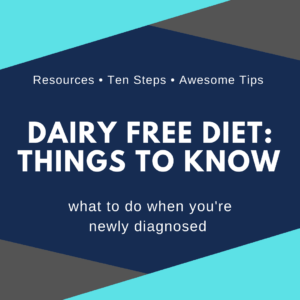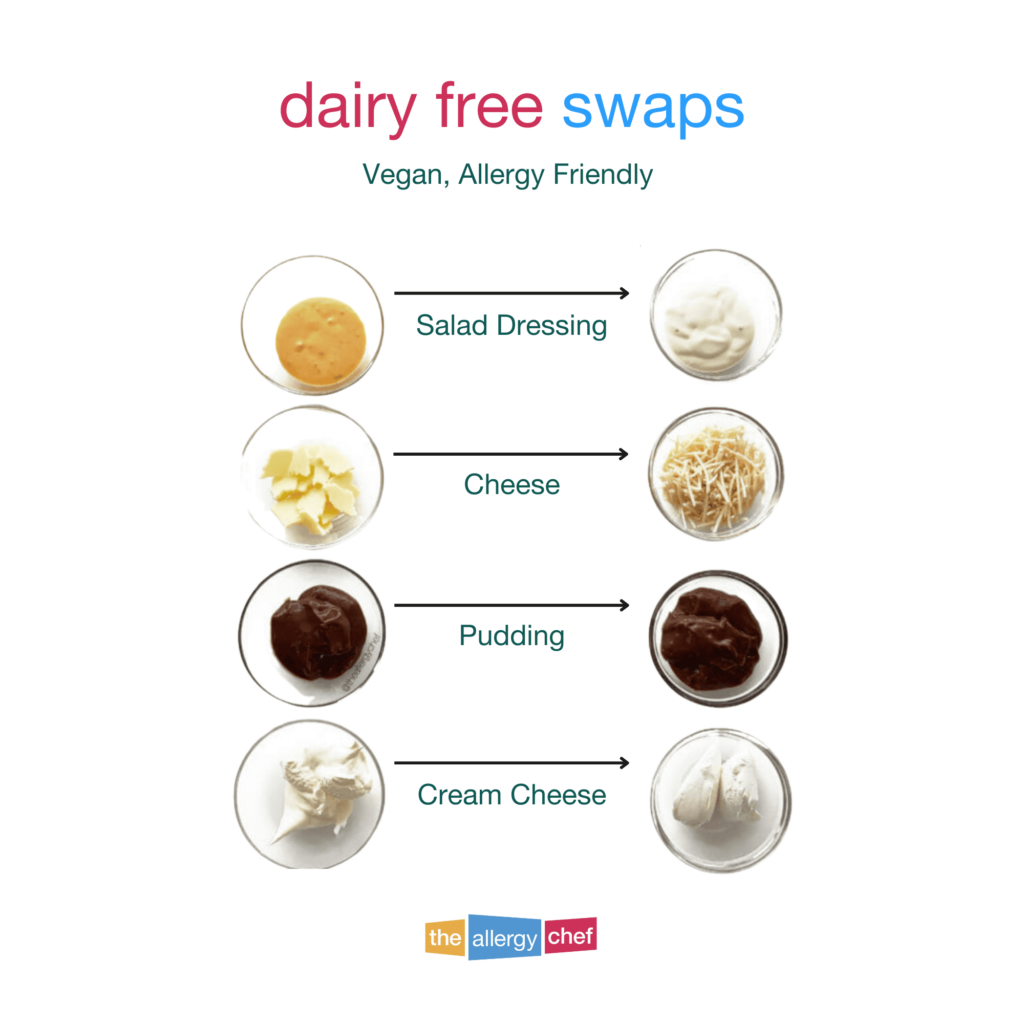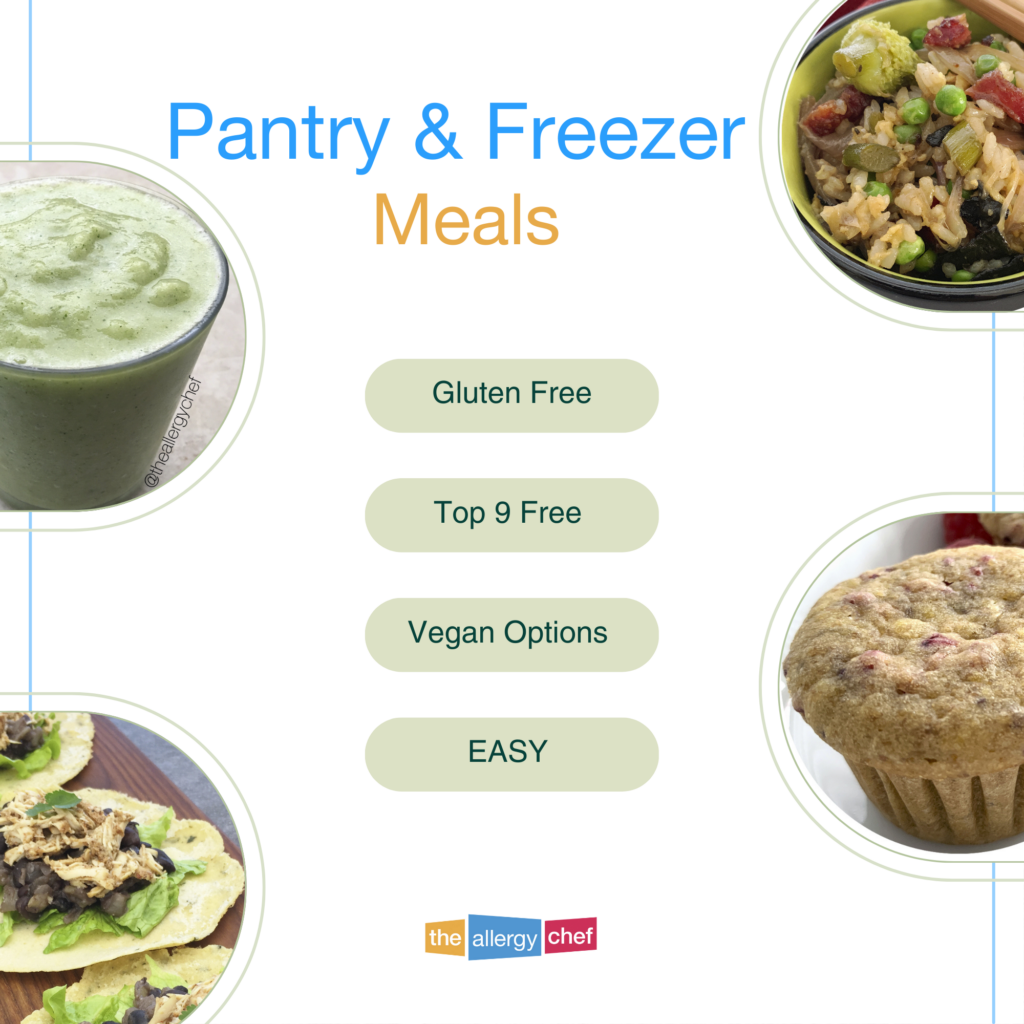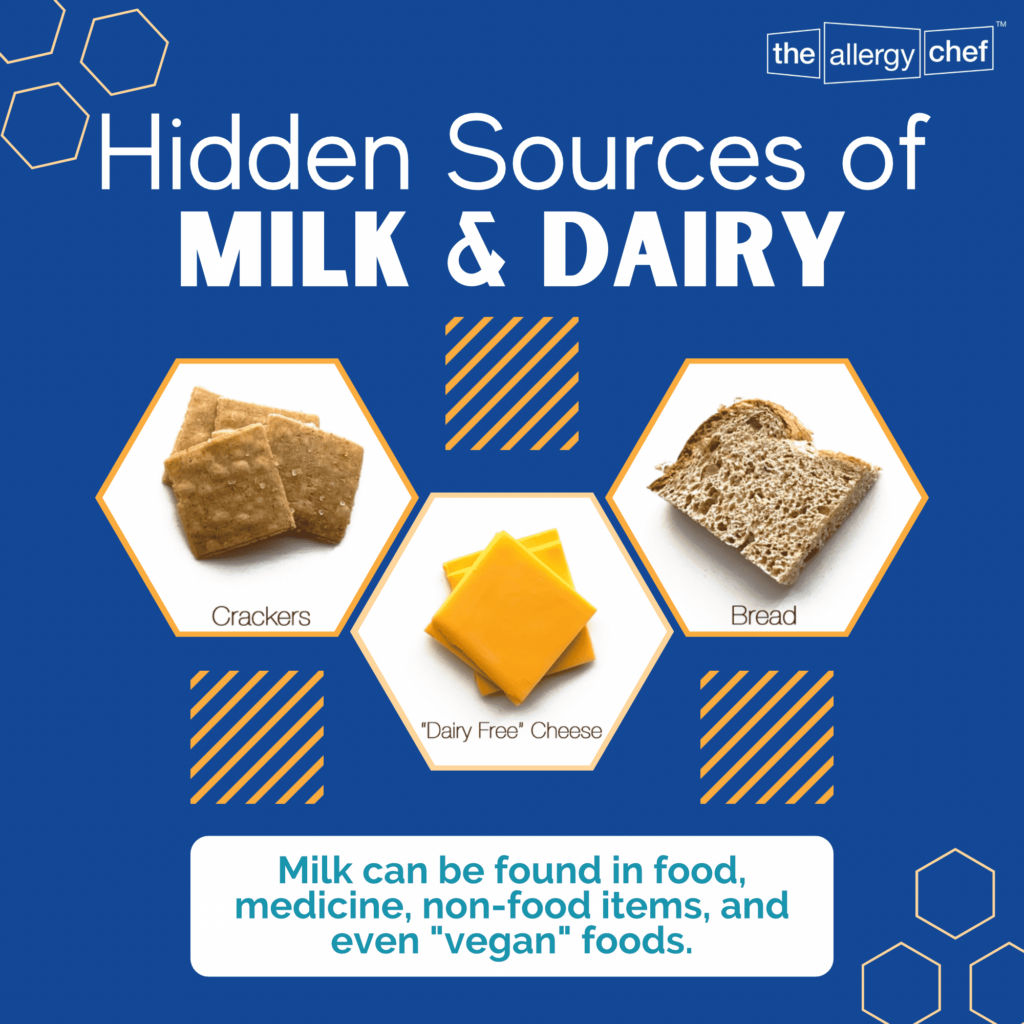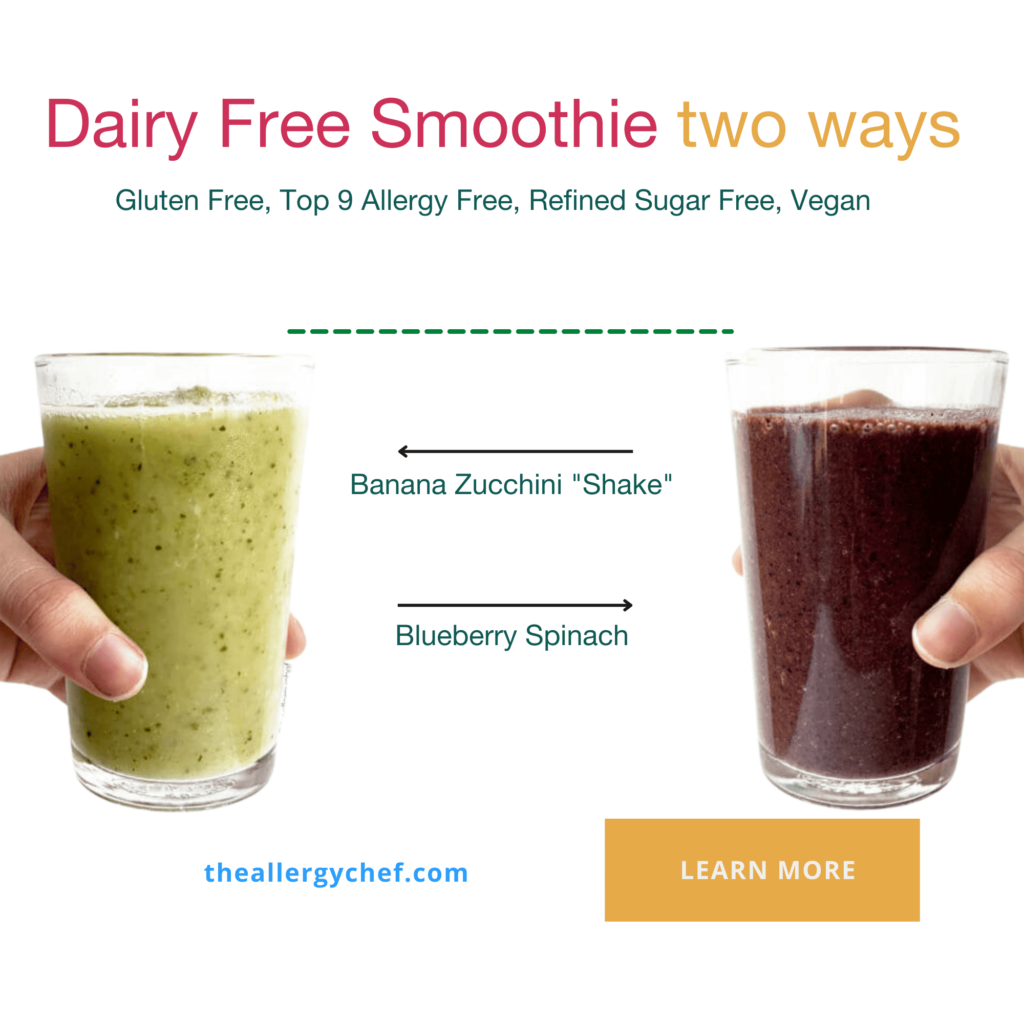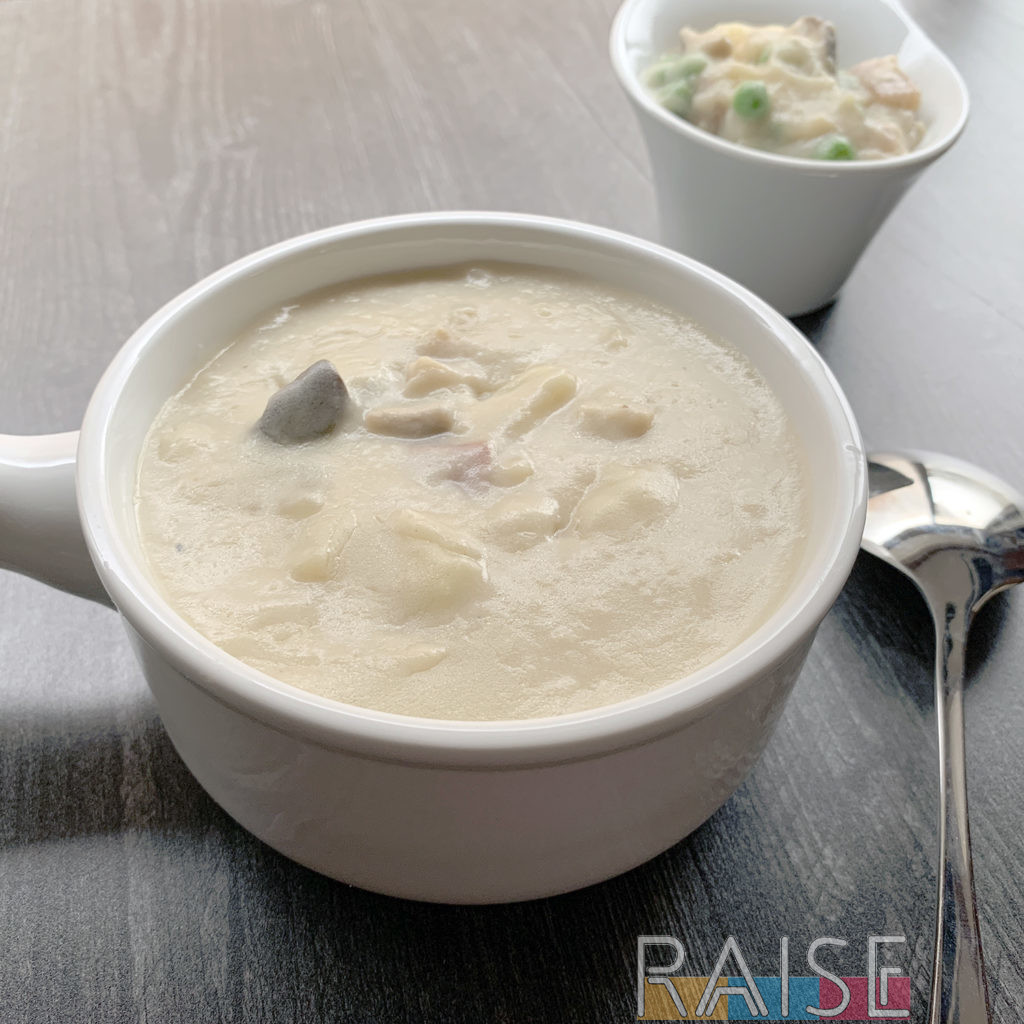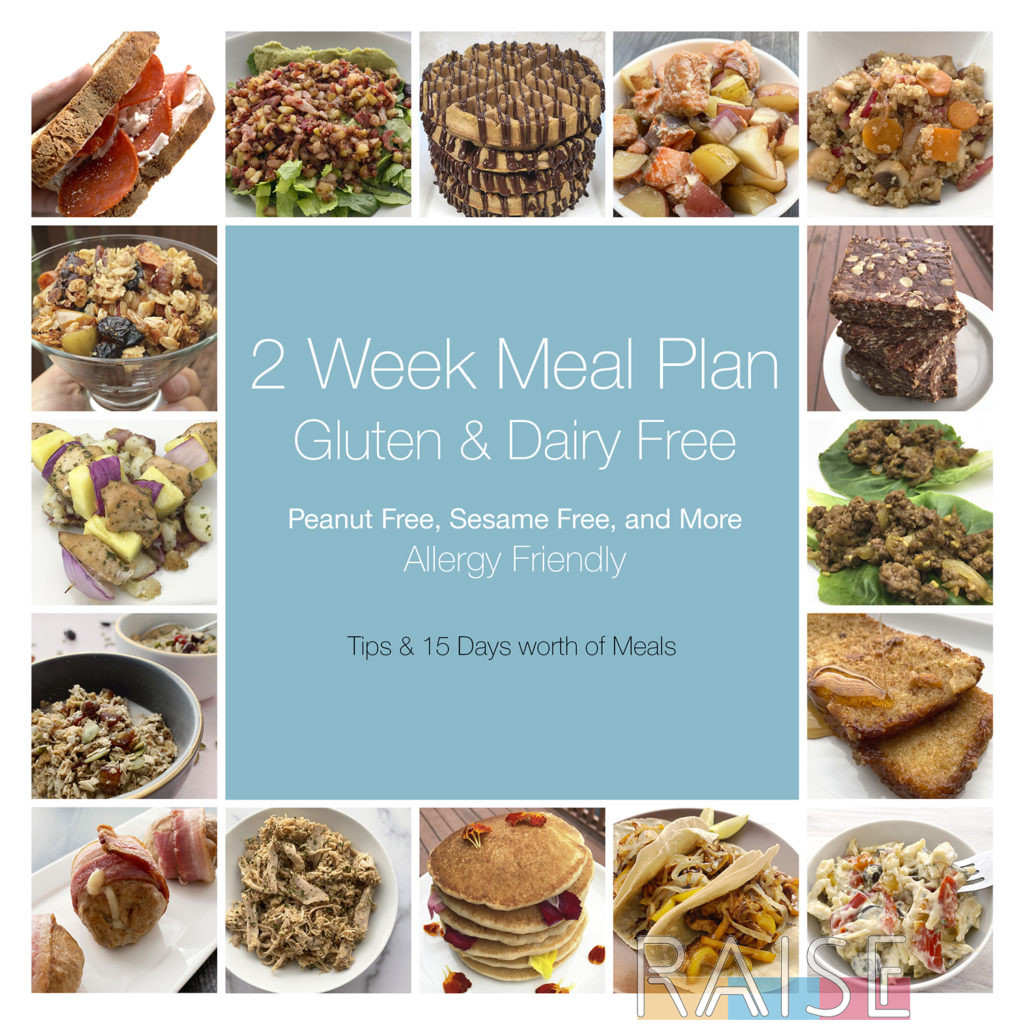We are currently living in a time where being dairy free couldn’t be easier… for the most part. It’s important to note up front that there are different levels of sensitivity in each individual. How easy your dairy free journey is will depend on how sensitive you are (more on this later). Also, if you are gluten free and dairy free, be sure to read the article: How to Go Gluten Free.
When you’re first starting out, there are lots of dairy free questions you may have, so let’s get a few out of the way.
Are marshmallows dairy free?
Yes, marshmallows are dairy free. However, most contain gelatin which can be a problem for some people. In our case, Kid Two can consume NOTHING from a cow. Not the flesh, not the milk, not the gelatin. Most people with a dairy allergy can consume gelatin.
Is ghee dairy free?
No. Ghee is created from milk. There’s more information on ghee below.
Are eggs dairy free?
Yes, eggs are milk and dairy free. I think the misconception comes from the old food chart pyramid where eggs and dairy are combined together.
Is goat cheese dairy free?
No, goat cheese contains dairy, as in, milk from a mammal. Below is more information on this. Some people who cannot have cow’s milk can consume milk from other mammals.
Related Article: Dairy Free Swaps
Dairy Free vs Milk Free
Milk is defined as an opaque white fluid rich in fat and protein. It’s secreted by female mammals for the nourishment of their young. Commercially, you’ll find buffalo milk, camel milk, cow milk, goat milk, and sheep milk.
Dairy means food made from or containing milk.
A good way to think about this: you can purchase milk in the dairy aisle of the grocery store. In the dairy aisle, you’ll find a range of items containing milk including butter, cheese, and yogurt.
Cow’s Milk Protein Allergy (CMPA)
It’s important to know that a cow’s milk protein allergy is one of the most common allergies currently diagnosed. An IgE mediated cow’s milk protein allergy will elicit an allergic response within 4 hours of consuming cow’s milk (in most cases). It’s not uncommon for the reaction to be immediate. In a delayed reaction, symptoms can occur from 4 hours – 1 week after consuming cow’s milk.
Milk allergy symptoms can vary from person to person, which is why you’ll always hear me say “no two people are the same”. For some, it’s anaphylaxis (requiring an epi-pen) and for others, it’s non-traditional symptoms which aren’t life-threatening.
A delayed allergic reaction is considered to be non-IgE mediated, however, in some rare cases, it is a true IgE reaction. The science behind the mechanics of food allergy isn’t 100% understood the way we understand broken bones and heart disease.
Related Article: Easy Gluten Free Dairy Free Meals From Your Pantry (Top 9 Allergy Free)
Understanding the Parts of Milk
Casein: The main protein present in milk and cheese.
Ghee: Clarified butter made from the milk of a buffalo or cow. Some feel this is “dairy free” since it’s the fat content and the protein is “removed”.
Lactose: The sugar present in milk.
Whey: The watery part of milk that remains after the formation of curds.
Milk Allergy vs. Lactose Intolerance
Lactose intolerance means your body can’t properly break down the lactose (natural sugar) found in milk. People who are lactose intolerant can usually safely consume dairy products where the milk sugar has been removed. Lactose intolerance symptoms are usually GI based, and often delayed a bit after eating. A lactose intolerance is not life-threatening, and does not require an epi-pen.
A milk allergy is an IgE mediated immune response from your body to all components of milk. Milk has a complicated structure, and in fact, doctors usually use the dairy ladder when placing a patient on oral-immunotherapy (OIT). Milk allergy symptoms can range from mild to life-threatening. Those allergic can experience itching, wheezing, coughing, difficulty breathing, vomiting, hives, low blood pressure, headache/migraines, anaphylaxis, and more. There are hundreds of milk allergy symptoms a person can experience (I’ve listed the most common), which is why you must remember, no two people are the same.
Related Article: Hidden Sources of Milk and Dairy
Confusion With The Word Milk Where Allergy Is Concerned
CMPA, Milk Allergy, Dairy Allergy, Lactose Intolerant…. They sound so different and each mean something slightly different. If you’re allergic to milk, you generally say milk allergy and dairy allergy still applies. When you’re lactose intolerant, you would say lactose intolerant. If you’re allergic to the milk of all mammals, you can say milk allergy or dairy allergy. If you’re allergic to cow’s milk only and can consume the milk of other mammals, you would say CMPA.
A PSA for those of you who are lactose intolerant: please don’t say you’re allergic. If someone knows you’re allergic and sees you eat hard cheese (which is generally safe for someone that’s lactose intolerant) they’ll either be confused or think you’re lying. This may also make them question others who use the word allergy. Kind of how people who don’t like a food say they’re “allergic” when that couldn’t be further from the truth.
It’s Important To Know How Sensitive You Are When You Have a Milk Allergy
For some people with a milk allergy, any exposure over 0ppm may cause symptoms. For others, trace amounts of milk and dairy don’t cause a reaction. Generally speaking, there are a few thoughts to consider when talking about sensitivity:
- Can I breathe it? If no, then you have an airborne allergy.
- Can I touch it? If no, then you have a contact allergy.
- Am I able to eat food made with the same (cleaned) equipment/tools?
- If my food is made in the same kitchen/facility as the trigger food, am I able to eat it?
Now, let’s take a further look at these levels of sensitivity. Keep in mind, no two people are the same. This information mostly pertains to a milk allergy, as lactose intolerance is not a life-threatening allergy.
Related Resource: Dairy Free Smoothies (Vegan, Top 9 Allergy Free)
What It Means To Have an Airborne Milk Allergy
I can tell you about an experience Kid Two had so you can better understand what an airborne allergy is like. He was part of a stage play and they served the cast pizza for dinner. He takes his own food everywhere he goes so he can eat with others. Upon arriving, he began to have an allergic reaction (throat issues, asthmatic issues, tongue issues). He had to leave the room. The overwhelming amount of steaming hot pizza in the room was too much for his system to handle.
In his case, there’s a threshold before the reaction happens. He’s been near small amounts of cooking dairy without having a reaction.
What Is a Contact Allergy or Reaction?
A contact reaction happens when you touch the trigger food. The food may be raw or cooked (no two people are the same). Here’s another example I can share with you: if you take a dab of milk and touch it to Kid Two, that spot will turn bright red within a minute or so. It becomes irritated and takes quite a while to clear up. He is contact allergic to milk.
Here’s another example I can share with you: bell peppers. When I touch them, my fingers burn like they’re on fire. In some instances, it’s like having fingers that are plagued with frost bite but also very heavy. It’s hard to describe but it’s painful and I’d rather avoid it.
Related Recipe: Gluten Free Dairy Free Creamy Fettuccine Pasta (Vegan)
Consuming Food Made on Shared Equipment aka May Contain
It’s important to understand how to read a label, as well as what’s NOT on a food label. Once you know that, you’ll need to understand how food is made, and how many companies use co-packers. This Allergy Expert Roundtable with Food Manufactures gives you great insight on how food is made.
You can also enroll in this free course to learn a lot more: Food Allergy Help 101 ~ Hidden Allergens.
Here’s an example that may happen in your home.You make a cast iron skillet cookie using cow’s milk butter. After washing the pan, you make another skillet cookie that uses dairy free butter. Given the fact that cast iron isn’t dishwasher safe, and non-stick remembers (more on that below), there will most likely be trace amounts of dairy in the cast iron pan. If this were to happen to Kid Two, he could have an allergic reaction.
In this case, the equipment was shared. This is why you’ll need to manage a mixed allergy household well, should that be your situation.
This same example extends to food manufactures and restaurants. If you can tolerate trace amounts of your trigger food(s) then shared equipment usually isn’t an issue. You should know however that some equipment is harder to clean than others, and chocolate is notorious for being problematic. Select wisely when purchasing dairy free foods if you cannot tolerate trace amounts.
Related Recipe: Cheese Free Gluten Free Dairy Free Curry Pizza (Top 9 Free)
Food Made In The Same Facility
Kid Two (now an adult) has decided that he will consume food made in a shared facility with dairy, but NOT on shared equipment. He has had reactions many times to foods (major brands you know) that’s made on shared equipment with milk. Click here for a visual on cross contamination to understand how allergens can move around a facility.
Now, it’s CRITICAL to know how large these facilities can be. This is also why calling companies is important. A food facility can be the size of a football field, or the size of your living room. A shared facility in both those cases mean something totally different. Some companies have what’s called a white room where free-from foods are processed. This is a great compromise when you’re unable to work in a 100% dedicated facility.
People who have been known to have reactions to trace amounts of allergens generally opt for free-from facilities when selecting their food. RAISE has several Product Lists to help you know which companies are working with dedicated facilities and dedicated equipment.
Related Easy Cooking Video & Recipe: Gluten Free Dairy Free Vegan Chowder (Top 9 Free)
A Fantastic Dairy Free Restaurant
One Dish Cuisine is located in the Washington DC area and when they started up, they made sure the property developer/owner knew their mission. They had them agree that there wouldn’t be other establishments with specific allergens within so many buildings of them to prevent airborne allergen particles from entering their air-intake valves. I mean, the dedication is AMAZING. Not everyone will think of all these details. When you find someone who does, support them. If we lived on the east coast, we’d be there at least once a week.
Related Resource: 2 Week Allergy Friendly, Gluten Free Meal Plan
Ten Steps To Take When You’re Starting a Milk & Dairy Free Diet
1. Understand How To Read a Food Label & How To Call Companies
RAISE has these resources available for members: How To Read Food Labels and How To Call Companies. On your journey, you’ll need to do these tasks regularly. As you find new products you want to try, be sure to read the label twice and call before eating it. You’ll need to make sure there’s no milk in the product, on the equipment, or in the facility. For the equipment & facility, your level of sensitivity will determine if you need to ask these questions.
2. Clean Out Your Pantry
You will need to go through your pantry and fridge to remove everything that contains dairy. If a labels says “contains milk” then remove those items. Milk is considered a top allergen all over the world (it’s a US top 9 allergen, Canadian top 9 allergen, and European top 14 allergen), and if it’s in the product, the label will reflect that. Remember, a package only has to state if the allergen is in the product. Disclosing the facility and equipment etc. are all voluntary.
Tip: In pantries, milk is most commonly seen as powdered milk or whey on the label.
3. Examine Your Blender
This is especially true of blenders that can’t be dishwashed such as a Vitamix. Blenders can develop scratches over time and can be a potential hazard for someone who can’t consume food made on shared equipment.
In our home, we have 3 Vitamix containers for the blender base and each one is clearly labeled. We label the lid, base, and removable portion of the lid; as well as the tamper. This ensures that those with allergies have their own safe unit to use as these containers absolutely have a residue.
4. If You Have Multiple Allergies, Consider Purchasing a NutraMilk
Every commercially available brand of dairy free milk is made on shared equipment with at least one other major allergen. I strongly suggest if you’re dairy free, nut free, and/or corn free you look into purchasing a NutraMilk (use the code theallergychef50 to save $50).
A NutraMilk will allow you to make plant-based milk at home with peace of mind using your own dedicated machine. I make milk with a NutraMilk for personal use and for our Bakery (Dairy Free, Vegan, Gluten Free, Top 9 Free).
The NutraMilk increases your yield and saves a truck-load of time. Plus, it’s 100% dishwasher safe. I like to make extra milk and freeze it for cooking and baking in the future. For those who can have nuts and/or seeds, you can also make spreads in your NutraMilk.
5. Examine Your Cookware & Bakeware
Deep scratches can be an issue with cookware, bakeware, and cutting boards too. I like to say “non-stick remembers, especially cast iron”. These types of items most likely will need to be replaced. If you’re living in a mixed allergy household, save the milk-containing pans for those who can use them, should you choose to have them continue eating dairy.
Don’t forget to replace wooden spoons, as porous materials can contain trace amounts of allergens.
6. Replace, Separate, and Color Code Sponges
This is especially important if you don’t have a dishwasher. Think of Spencer, washing dishes by hand with lots of love and care. He starts with a pot that’s made mac-n-cheese containing cow’s milk. Next, he moves on to the pot that made Dairy Free Creamy Mac-n-Cheese, using the same sponge. Trace amounts of milk can move to the milk free pot. That doesn’t mean this WILL happen. Instead, take precautions. Use a color-coded system for sponges, and keep them separated.
7. Reach out to Your GP About Any Medication You’re Taking
Milk and Lactose can be found in supplements and medications. Reach out to your GP to confirm that the active AND inactive ingredients in any medication you’re taking is both milk and lactose free. You may need to work with a compounding pharmacy to source safe medicine.
You’ll also need to check your OTC meds, as many have recently added milk derivatives to the ingredients. RAISE has a resource on compounding medication for those who need to.
8. Purchase Dairy and Milk Free Foods To Cook & Bake With
THIS will be your biggest hurdle IF YOU NEED food made on dairy free equipment. You can rely on products like the Gluten Free Allergy Friendly Product Guide which contains products made on dairy free equipment. I called hundreds of companies to confirm their allergy status. Fun fact: most dairy free foods are made on shared equipment with dairy. You can read more about this in the Dairy Free Swaps article.
You can also read free-from product reviews. My kids sample gluten free, dairy free, allergy friendly products and tell you what they think. It may be a good launch point for you in deciding which foods to try first.
When reaching out on your own, set aside 20 minutes a day to call/email companies. Ask lots of questions to make sure the food will be safe for you.
The BIGGEST tip I can give you when first shopping dairy free: don’t rush to purchase loads of dairy free packaged foods. Instead, purchase foods that are naturally milk free such as fresh produce, nuts, seeds, and clean animal proteins. Some lactose free, milk free, and dairy free foods are full of ingredients you’ll want to avoid.
9. Go Through Your Bath & Body Products
If you determine you have a contact reaction to milk, you’ll want to replace some of your personal care items ASAP. If you’re unsure, or feel like it may not be a big issue for you, replace items as you run out.
It’s not uncommon to find milk in bath bombs, shampoos, lotions, and creams.
10. Check Out These Two Resources
Bonus Number 11. If You Need Recipes & Support, Join RAISE
The RAISE Membership platform is 100% gluten free, dairy free, and more. Tap into recipes, resources, and everything you need to thrive when living with a restricted diet. You can go through the Getting Started section, see Product Guides, learn from Allergy Seminars, read Guides, watch Live Content Replays, and much more. Perhaps the biggest perk to joining RAISE is the priority support our Members receive.
Click here to join RAISE today! Save time, save money, and start thriving now.

